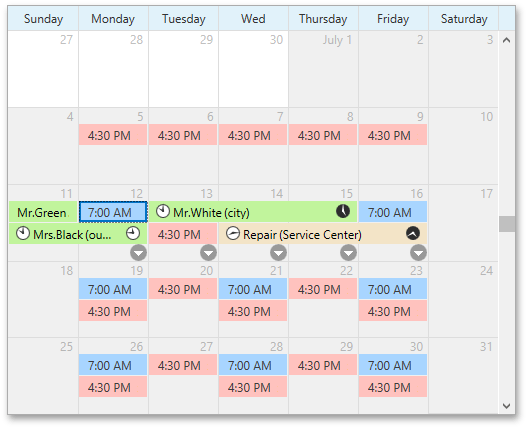Month (Multi-Week) View
- 2 minutes to read
Note
You are viewing documentation for the legacy WPF Scheduler control. If you’re starting a new project, we strongly recommend that you use a new control declared in the DevExpress.Xpf.Scheduling namespace. If you decide to upgrade an existing project in order to switch to the updated scheduler control, see the Migration Guidelines document.
This document introduces the Month view of the Scheduler Control.
The Month View is the least detailed of the views, and is designed to allow your end-users to browse and analyze long-term plans. This view positions the days one after another horizontally so that they form weeks, while weeks are placed one under another. This view’s options are represented via the MonthView object, which is accessed via the SchedulerControl.MonthView property. The image below demonstrates the SchedulerControl, with its SchedulerControl.ActiveViewType property set to Month.

The following table lists the main properties of the MonthView class which implement its basic functionality.
| Member Name | Description |
|---|---|
| MonthView.WeekCount | Gets or sets the number of weeks that are simultaneously displayed in the Month View. |
| MonthView.CompressWeekend | Gets or sets a value indicating if the weekend days (Saturday and Sunday) should be displayed as one day in a Month View. |
| MonthView.ShowWeekend | Gets or sets a value indicating if the scheduler should also show its data for the weekend days (Saturday and Sunday) in a Month View. |
| MonthView.AppointmentDisplayOptions | Provides access to the options specifying how appointments are displayed in a Month View. |